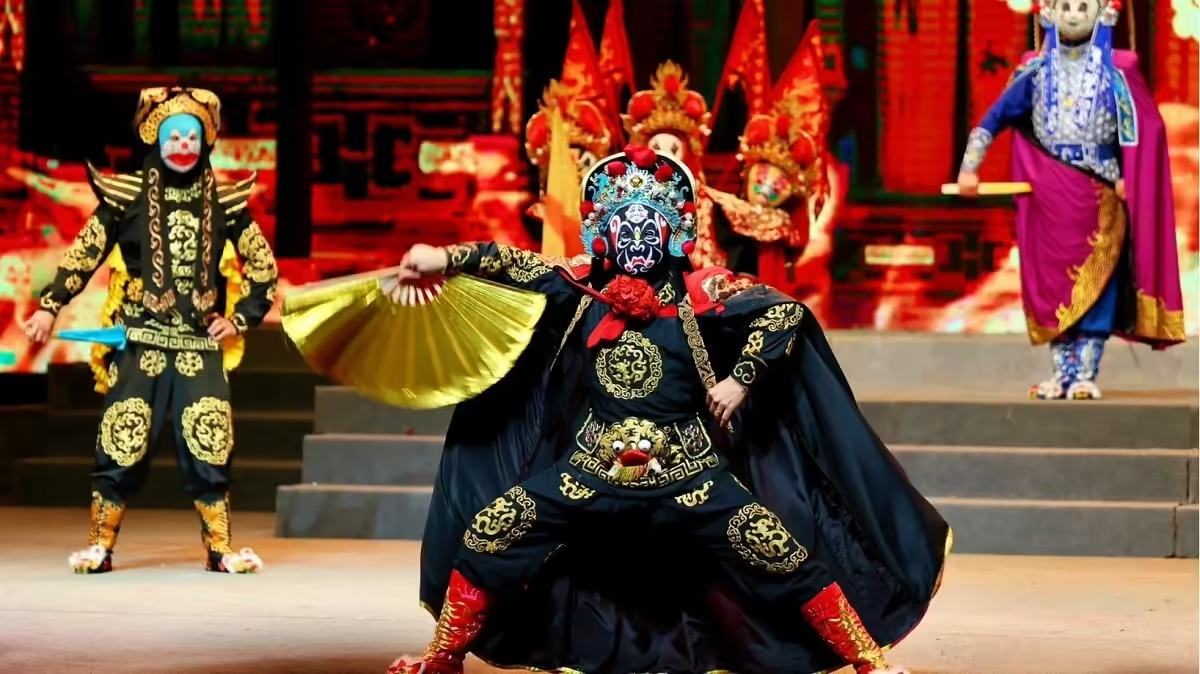The Chengdu Sichuan Opera Art Center is the first large-scale cultural and entertainment venue in China dedicated to Sichuan opera performances. It serves as a cultural industry base for the Chengdu Sichuan Opera Theatre and a center for the research and preservation of this traditional art form.
Originally established as the famous Yuelai Teahouse and Jinjiang Theatre, the center was long home to performances by the Chengdu Sanqinghui Theatre Company. After an expansion, it transformed into the Sichuan Opera Art Center, offering audiences the opportunity to enjoy various authentic Sichuan opera performances. Visitors can also gain a comprehensive understanding of Sichuan opera, which includes three main sections: the Jinjiang Theatre, Yuelai Teahouse, and the Sichuan Opera Art Museum.
This center not only showcases the rich cultural heritage of Sichuan opera but also plays a vital role in promoting and preserving this unique art form for future generations.
Travel Information about Chengdu Sichuan Opera Art Center
Ticket Information and Opening Hours
Admission: Free.
Opening Hours:
10:00 AM to 10:00 PM (Monday to Thursday)
10:00 AM to 10:30 PM (Friday to Saturday)
How to Get There
Location: 54 Huaxing Zhengjie, Jinjiang District, Chengdu.
Metro: Take Metro Line 3 and get off at the Second People’s Hospital station.
Attraction Rating
- Cultural Experience: ★★★★
- Leisure: ★★★
- Special Features: ★★★
- Beauty: ★★
- Romance: ★★
- Excitement: ★
Highlights of Chengdu Sichuan Opera Art Center
Jinjiang Theater
Jinjiang Theater is a multifunctional venue for comprehensive performances, surrounded by lush greenery and flowing waters, creating an elegant atmosphere. The theater’s architecture reflects the classical style of western Sichuan residential buildings, adorned with luxurious and traditional decorations. It is one of the few newly constructed, professional, and modern theaters in Chengdu.
The theater is equipped with professional facilities, including a lifting stage, digital subtitle machines, high-end imported sound systems, and airline-style seating, ensuring the best audio-visual experience for the audience.
Every evening, the theater hosts the performance titled “Furong Guocui,” showcasing the talents of renowned actors from Chengdu’s Sichuan opera scene. The carefully choreographed performances include classic Sichuan opera repertoire, integrating elements such as face-changing, fire-spitting, rolling lights, shadow puppetry, and more. With the addition of modern sound and lighting effects, these performances provide a stunning experience for attendees.
Yuelai Teahouse
Yuelai Teahouse, established in 1908, originally served as a shrine for theatrical artists to pay homage to the god of drama. For over a century, it has been recognized as a hub for Sichuan opera, witnessing the rise and fall of this traditional art form. The teahouse features three levels: a ground floor with standard seating, a second-floor mid-range tea hall, and an open-air ecological teahouse on the roof.
Regular performances of traditional Sichuan opera excerpts take place on the ancient-style Wannian stage located on the ground floor. The second floor, adorned with intricate decorative crafts, offers a cozy atmosphere where visitors can enjoy authentic Sichuan tea while listening to captivating operatic performances, including classics such as 斩黄袍 (The Cutting of the Yellow Robe), 逼嫁玉莲 (Forced Marriage of Yu Lian), and 盗仙草 (Stealing the Immortal Herb). This experience provides a delightful blend of art and culture, making it a true artistic indulgence.
Sichuan Opera Art Museum
The Sichuan Opera Art Museum is the first museum in China dedicated to the theme of Sichuan opera, covering an area of 964 square meters. It showcases the history and artistic achievements of Sichuan opera through valuable documents, photographs, and artifacts. The museum is divided into three sections: “梨园簇锦” (A Collection of Pear Garden Beauties), “蜀曲流芳” (The Elegance of Sichuan Tunes), and “奇葩烂漫” (The Splendor of Unique Flowers).
“梨园簇锦” primarily exhibits the evolution and development of five key aspects of Sichuan opera: repertoire, playwriting, performance, music, and stage art. This section features props, costumes, masks, and facial paintings used in Sichuan opera performances. “蜀曲流芳” traces the history of Sichuan opera from its early forms during the Three Kingdoms period through the Tang, Song, Yuan, Ming, and Qing dynasties, up to the early 1980s. “奇葩烂漫” provides detailed insights into the government’s support for Sichuan opera, its revival, and the flourishing of creative performances.

